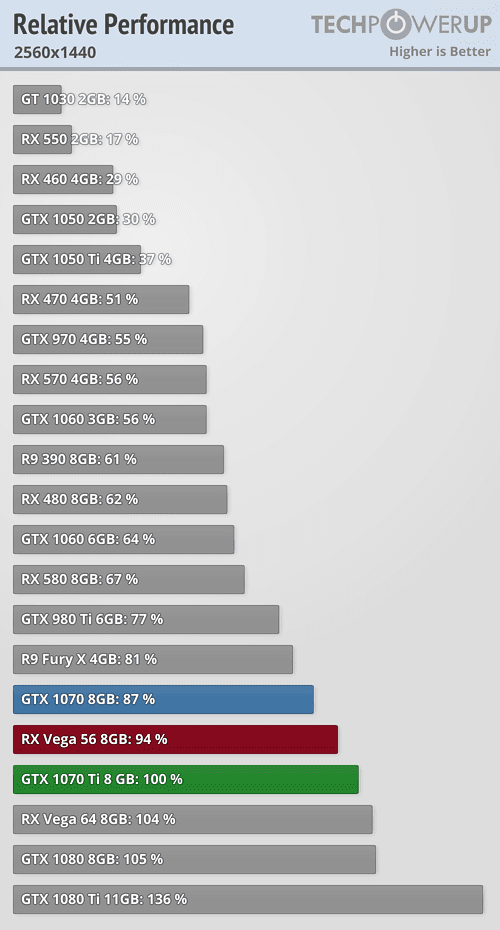Raevenlord
News Editor
- Joined
- Aug 12, 2016
- Messages
- 3,755 (1.15/day)
- Location
- Portugal
| System Name | The Ryzening |
|---|---|
| Processor | AMD Ryzen 9 5900X |
| Motherboard | MSI X570 MAG TOMAHAWK |
| Cooling | Lian Li Galahad 360mm AIO |
| Memory | 32 GB G.Skill Trident Z F4-3733 (4x 8 GB) |
| Video Card(s) | Gigabyte RTX 3070 Ti |
| Storage | Boot: Transcend MTE220S 2TB, Kintson A2000 1TB, Seagate Firewolf Pro 14 TB |
| Display(s) | Acer Nitro VG270UP (1440p 144 Hz IPS) |
| Case | Lian Li O11DX Dynamic White |
| Audio Device(s) | iFi Audio Zen DAC |
| Power Supply | Seasonic Focus+ 750 W |
| Mouse | Cooler Master Masterkeys Lite L |
| Keyboard | Cooler Master Masterkeys Lite L |
| Software | Windows 10 x64 |
ASUS has introduced a new ROG Strix monitor to its lineup, the XG35VQ, which brings with it UWQHD resolution (3440 x 1440) in a 21:9 aspect ratio and a 35" diagonal. It's a curved affair - 1800R at that - and ASUS says the VA panel offers 100% sRGB coverage, plus 2500:1 contrast and 300 cd/m2 brightness. Viewing angles stand at an almost perfect 178° - a standard spec in recent times.
The most interesting selling point for this monitor, however, is that it can deliver a 100 Hz refresh rate, with FreeSync support up to that frequency. A 4 ms response time means reduced ghosting, and the panel also applies ASUS' version of Extreme Low Motion Blur mode, which strobes the LED backlight to lower persistence, much like a VR display. This mode uses a fixed refresh rate, so ASUS recommends it for fast-paced games where users can comfortably maintain high frame rates.
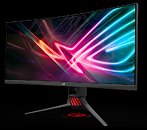
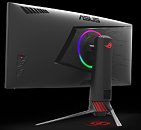

There are RGB LEDs to illuminate a ring on the back of the monitor, which feature support for Aura Sync, so users can coordinate the colors and effects with other components, from external peripherals to internal parts. Additional LED lighting takes the form of a red ROG logo being projected onto the desk. It originates in the base of the stand, whose height, swivel, and tilt are all easily adjustable. Connectivity stands at 1x HDMI 2.0, 1x HDMI 1.4, 1x DisplayPort 1.2, and a headphone jack. A dual-port USB 3.0 hub completes the specs with a convenient place to connect users' keyboard and mouse.
The XG35VQ is expected to cost £799.99 (~$1,056, or ~€895).
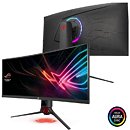
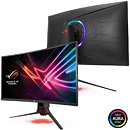
View at TechPowerUp Main Site
The most interesting selling point for this monitor, however, is that it can deliver a 100 Hz refresh rate, with FreeSync support up to that frequency. A 4 ms response time means reduced ghosting, and the panel also applies ASUS' version of Extreme Low Motion Blur mode, which strobes the LED backlight to lower persistence, much like a VR display. This mode uses a fixed refresh rate, so ASUS recommends it for fast-paced games where users can comfortably maintain high frame rates.



There are RGB LEDs to illuminate a ring on the back of the monitor, which feature support for Aura Sync, so users can coordinate the colors and effects with other components, from external peripherals to internal parts. Additional LED lighting takes the form of a red ROG logo being projected onto the desk. It originates in the base of the stand, whose height, swivel, and tilt are all easily adjustable. Connectivity stands at 1x HDMI 2.0, 1x HDMI 1.4, 1x DisplayPort 1.2, and a headphone jack. A dual-port USB 3.0 hub completes the specs with a convenient place to connect users' keyboard and mouse.
The XG35VQ is expected to cost £799.99 (~$1,056, or ~€895).


View at TechPowerUp Main Site




